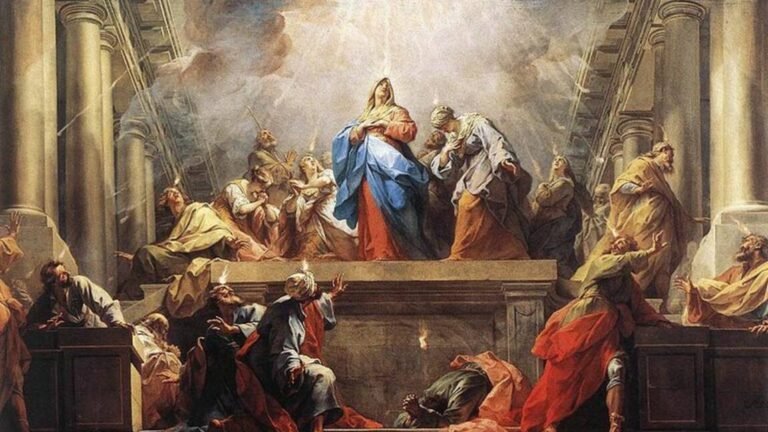Contents
ToggleIn short
Pentecost (also called the Feast of the Trinity or the Descent of the Holy Spirit) is one of the Great Feasts of the Orthodox Church, celebrated fifty days after Easter (therefore always falling on a Sunday).
Trinity Day, Orthodox Pentecost
Fifty days after the Resurrection, on the Jewish festival of Pentecost, as the disciples and many other followers of Jesus Christ were gathered together to pray, the Holy Spirit descended on them in the form of “cloven tongues of fire.” , with the sound of a rushing wind, and they began to speak languages they did not know. There were many visitors from the Jewish diaspora in Jerusalem at this time for the Jewish observance of the holiday, and they were amazed to hear these uneducated fishermen speaking praises to God in their foreign languages.
The number fifty, as on the fiftieth day after Easter, represents eternal and heavenly fulfillment, seven times seven, plus one.
For the Feast of the Trinity, the icon of the Holy Trinity, the three angelic figures who appeared to Abraham, is placed in the center of the church for veneration. This icon is used along with the traditional Pentecost icon. The church building is decorated with flowers and the green leaves of summer to show that God's divine breath renews all creation. Green vestments and coverings are also used.
In many parishes, the feast of the Trinity is celebrated the day before with Great Vespers. Some parishes also serve Matins on the morning of the feast before the Divine Liturgy.
The liturgy of St. John Chrysostom with special hymns replacing the standard antiphons. The hymns O Heavenly King and We Have Seen the True Light are sung for the first time since Easter, calling on the Holy Spirit to “come and dwell in us” and proclaiming that “we have received the heavenly Spirit.”
An extraordinary service called Kneeling Vespers is observed on the evening of Pentecost. It consists of a Vespers service to which are added three series of long poetic prayers, composed by Saint Basil the Great, during which each person makes a complete prostration, with their forehead touching the ground (prostrations in church having been forbidden from Easter Day until the present). In many parishes, this service is held immediately after the liturgy.
The Monday after the Feast of the Trinity is the Feast of the Holy Spirit in the Orthodox Church, and the Sunday after Pentecost is the Feast of All Saints.
Although the beginning of the liturgical year is considered to begin in September, the liturgical center of the annual cycle of Orthodox worship is the feast of Easter, preceded by Great Lent and Pre-Lent, and followed by the fifty days of Paschal celebration until the feast of Pentecost. Until the beginning of the next Great Lent, the Sundays and weeks following Pentecost are numbered from Pentecost. The liturgical readings and hymns will be based on the "weeks after Pentecost" as listed in the arranged Gospel Octoechos, Apostolos, and Lectionary.
Social networks
Today, the Orthodox celebrate Pentecost. It celebrates the outpouring of the Holy Spirit on the fiftieth day from Easter on a group of disciples of Jesus of Nazareth, including the Twelve Apostles. #mythology #myth #legend #calendar #Pentecost
Picture
